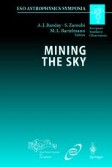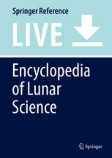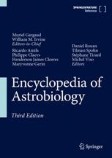Search
Search Results
-
Infrared Searches for Extrasolar Planets
CRIRES will play an important role in the indirect and direct detections of extrasolar planets. Radial velocity measurements made with CRIRES will be...
-
SIFTIR: Spectro-Polarimetric Imaging Fourier Transform Spectrometer for the InfraRed
Observations of evolved stars in the infrared are well suited for studies of dusty environments, providing a wealth of absorption and emission bands...
-
Near infrared background with 1.2-m telescope at Mount Abu
We present an estimation and analysis of Near Infrared (NIR) background for the astronomical site at Mount Abu. Mount Abu Observatory is situated at...

-
On the Effectiveness of Observations in the Mid-Infrared Wavelength Range on the 2.5-Meter Telescope of the Caucasus Mountain Observatory of Moscow State University with Commercial IR Cameras
AbstractThe main factors that influence the success of observations in the infrared range (central wavelengths of the photometric bands at 3.75 and...

-
High Resolution Mid-Infrared Spectroscopy of Star and Planet Forming Regions with TEXES
TEXES is a medium to high resolution mid-infrared spectrograph, used on the NASA IRTF. We have used it to measure R ≈ 80,000 spectra of molecular...
-
The Near-Infrared View of Galaxy Evolution
Near-infrared surveys provide one of the best opportunities to investigate the cosmic evolution of galaxies and their mass assembly. We briefly...
-
A benchmark JWST near-infrared spectrum for the exoplanet WASP-39 b
Observing exoplanets through transmission spectroscopy supplies detailed information about their atmospheric composition, physics and chemistry....

-
Radio Observations of the Subaru/XMM-Newton Deep Survey Field
The Subaru/XMM-Newton Deep Survey[1] (SXDS) comprises deep optical and X-ray observations of an area of sky larger than a square degree. With a...
-
The Mineralogy and Magnetism of Star and Planet Formation as Revealed by Mid-Infrared Spectropolarimetry
We present mid-infrared polarisation observations which elucidate the magnetic field and dust properties of the target objects, including sources...
-
Near-Infrared Integral Field Spectroscopy of Damped Lyman- $\alpha$ Systems
We assess the feasibility of detecting star formation in damped Lyman- $\alpha$...
-
T-ReCS and Michelle: The Mid-Infrared Spectroscopic Capabilities of the Gemini Observatory
Gemini Observatory’s northern and southern telescopes are both presently being outfitted with facility mid-infrared imagers/spectrometers. This will...
-
Radio and mid-infrared properties of the blazar J1419–0838
The radio quasar NVSS J141922−083830 (J1419−0838) was initially classified as an uncategorised blazar-type object, following its detection in the
... 
-

-
Adaptive Optics Observations of the Sun
Modern solar observations are performed close to the diffraction limit of the existing solar telescopes since important, fundamental processes on the...
-

-
Infrared Imaging of Embedded Clusters: Constraints for Star and Planet Formation
Since its implementation slightly more than a decade ago, astronomical imaging with near-infrared array detectors has matured into an important tool...
-

-

-

-
Magnetic origin of the discrepancy between stellar limb-darkening models and observations
Stars appear darker at their limbs than at their disk centres because at the limb we are viewing the higher and cooler layers of stellar...

